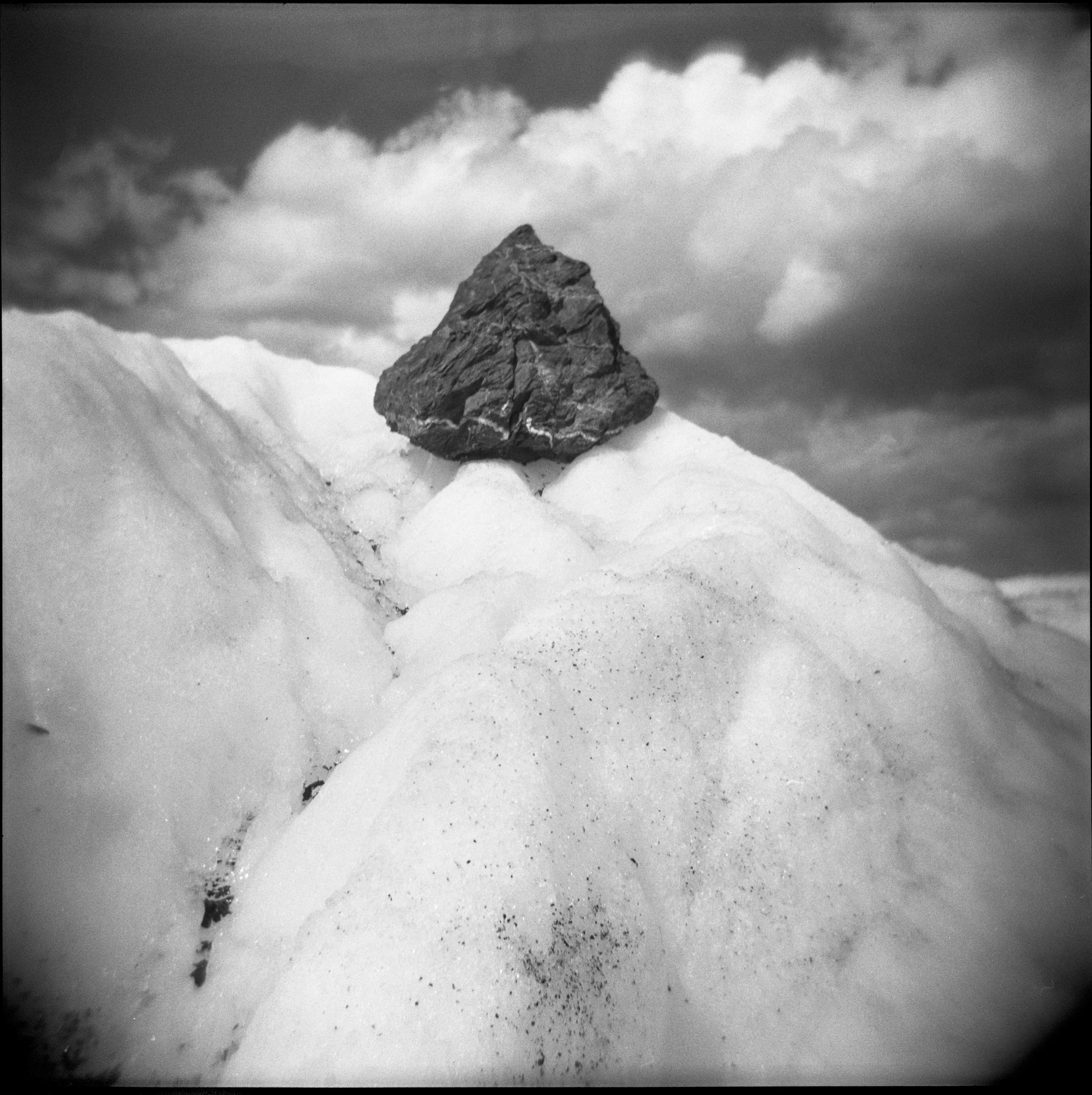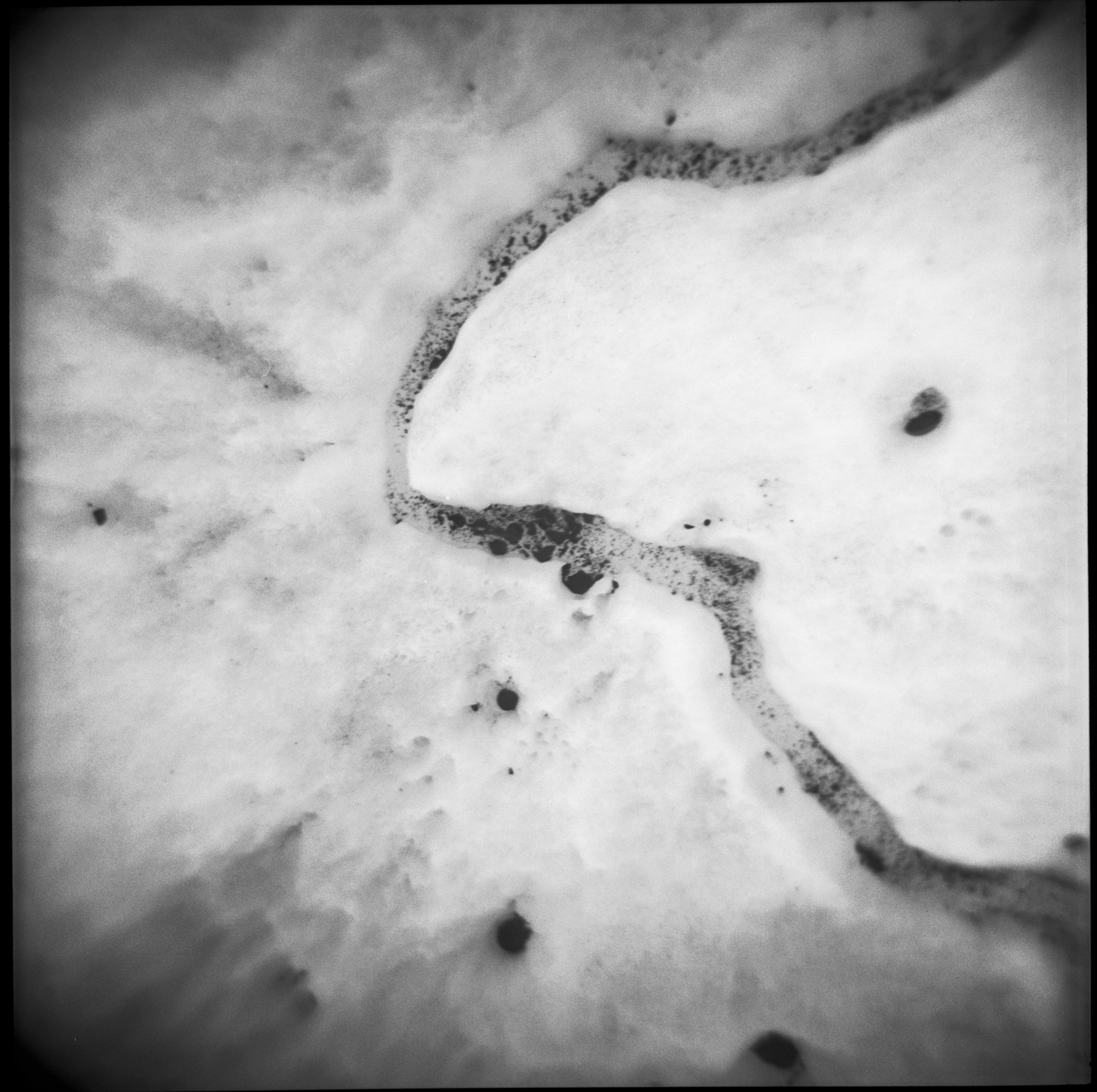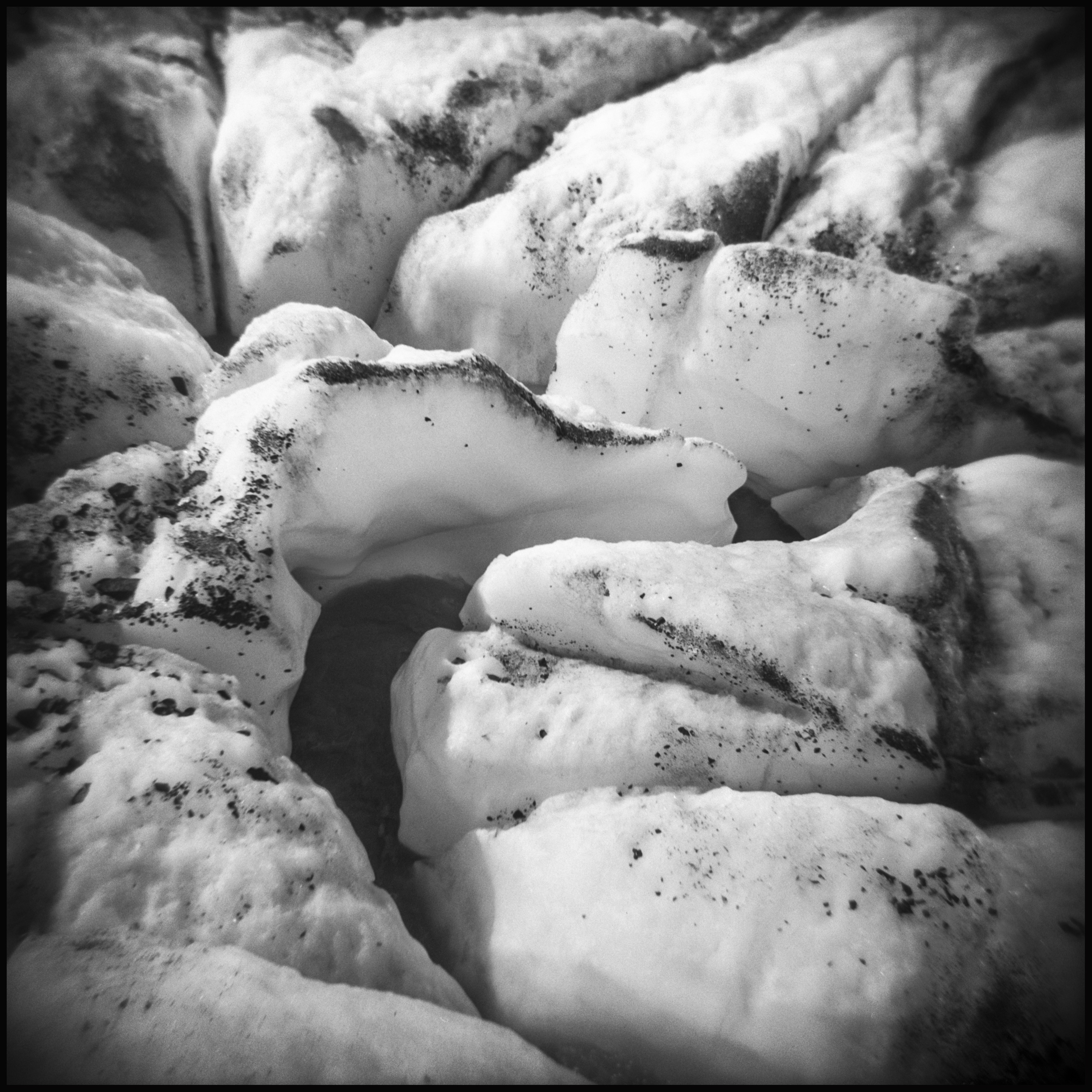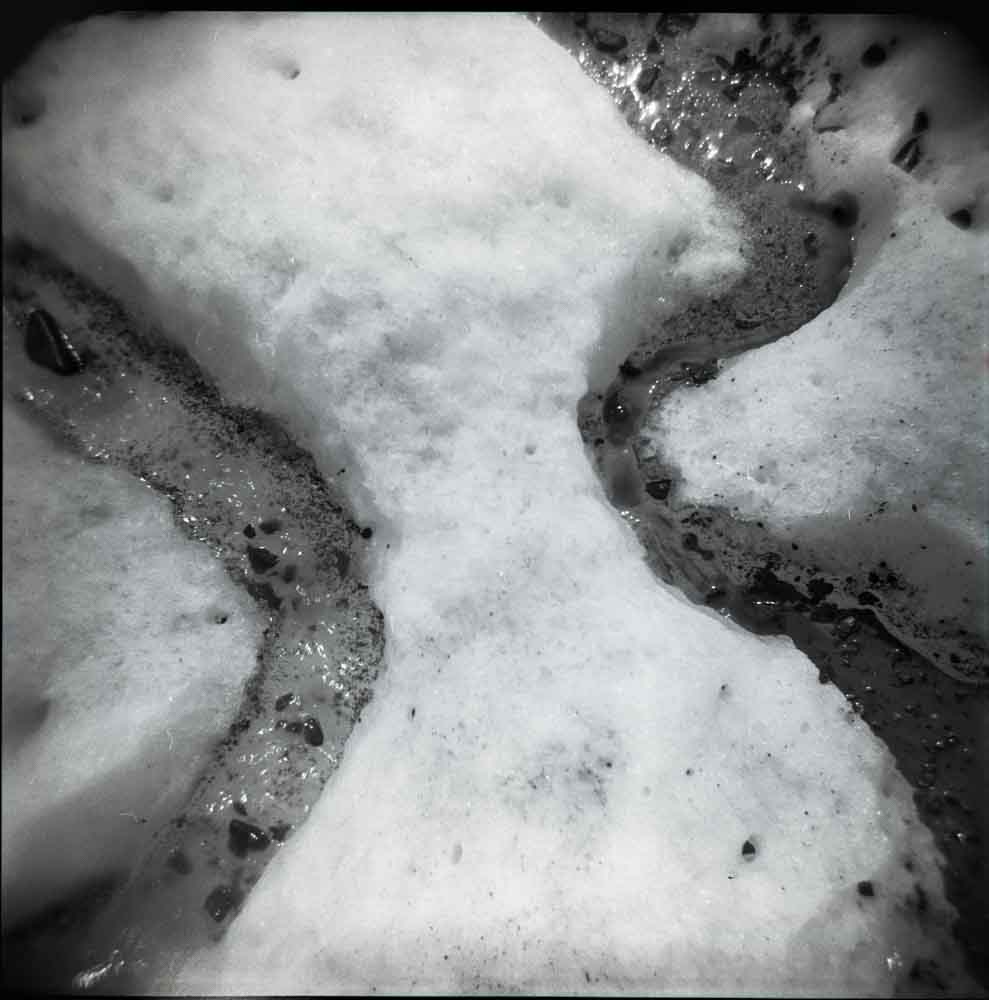Glaciers
All the images in this portfolio were shot on film cameras made of plastic. Plastic cameras are of imprecise quality: they can have light leaks, plastic does not offer the sharp precision of a well crafted glass lens, and there may be vignetting. But what I love about using plastic film cameras is precisely this imprecision, and I am forced to forget perfection and enjoy the beautiful imperfections. I could re-create the effects in photoshop, but again, it's about giving up some control of the outcome. The other aspect of plastic cameras that I enjoy is that the film is not wound forward in precise increments- it can be wound as little or as much as I like, and I like the effects of double exposures, but am in love with overlapping exposures because it creates a new landscape that does and doesn't exist.
I am drawn to glaciers as a subject because it is so sculptural- the lines, the textures, and forms created are marvelous. The sense of scale on a glacier is interesting- it is such a huge thing, but there is also a whole universe at my feet. Because it can be hard to convey just how big it is, and what it feels like to be out there, I find that I am most drawn to images that don't provide a sense of scale- is that stream the width of a finger, or a hundred feet?- because it better reflects my experiences.
Like film, being out on a glacier forces you to take a little bit of a risk, to give up the safety of precision, of solid ground, and if you can do that, it will be an enjoyable experience.











